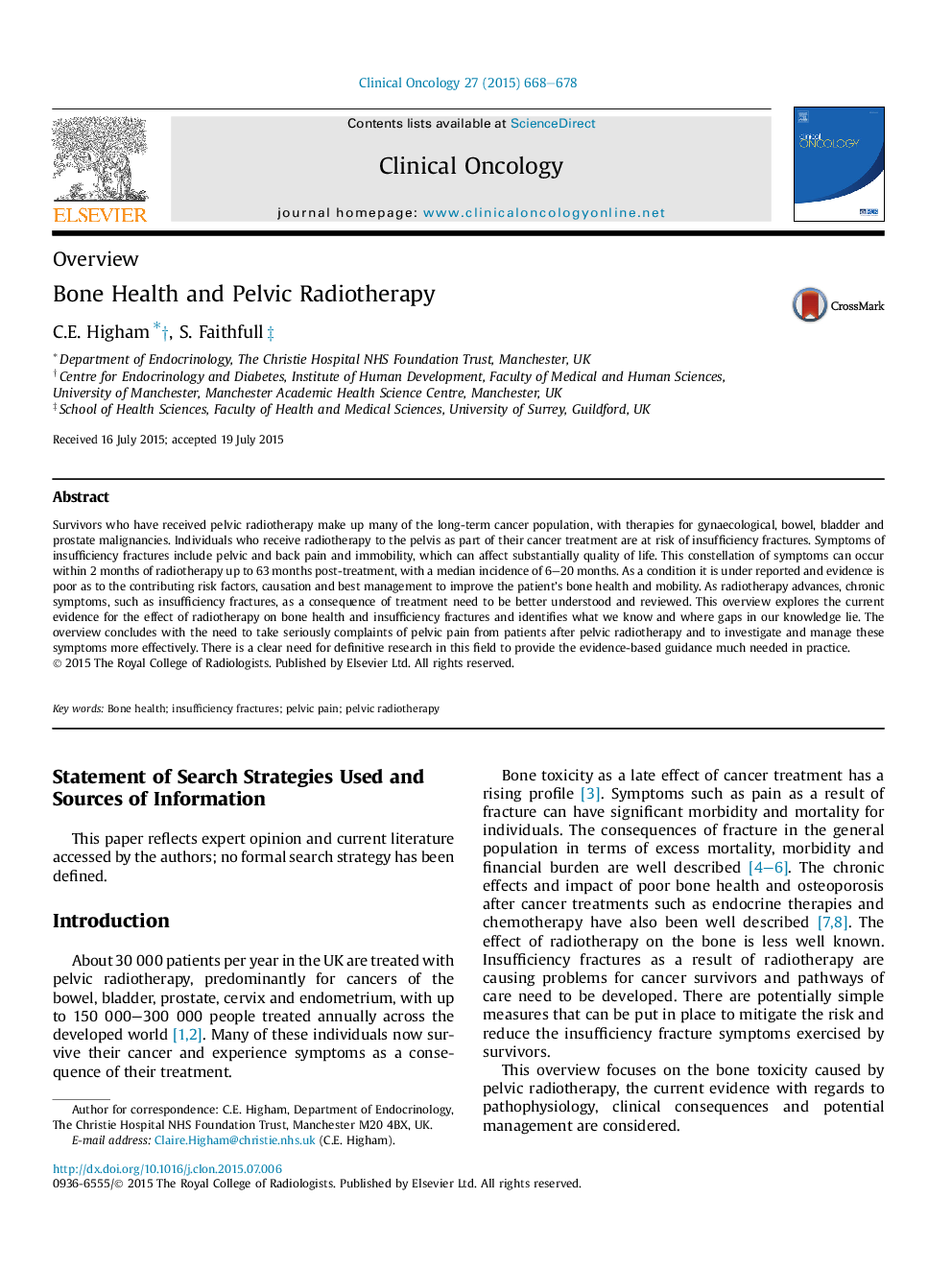| Article ID | Journal | Published Year | Pages | File Type |
|---|---|---|---|---|
| 5698151 | Clinical Oncology | 2015 | 11 Pages |
Abstract
Survivors who have received pelvic radiotherapy make up many of the long-term cancer population, with therapies for gynaecological, bowel, bladder and prostate malignancies. Individuals who receive radiotherapy to the pelvis as part of their cancer treatment are at risk of insufficiency fractures. Symptoms of insufficiency fractures include pelvic and back pain and immobility, which can affect substantially quality of life. This constellation of symptoms can occur within 2 months of radiotherapy up to 63 months post-treatment, with a median incidence of 6-20 months. As a condition it is under reported and evidence is poor as to the contributing risk factors, causation and best management to improve the patient's bone health and mobility. As radiotherapy advances, chronic symptoms, such as insufficiency fractures, as a consequence of treatment need to be better understood and reviewed. This overview explores the current evidence for the effect of radiotherapy on bone health and insufficiency fractures and identifies what we know and where gaps in our knowledge lie. The overview concludes with the need to take seriously complaints of pelvic pain from patients after pelvic radiotherapy and to investigate and manage these symptoms more effectively. There is a clear need for definitive research in this field to provide the evidence-based guidance much needed in practice.
Related Topics
Health Sciences
Medicine and Dentistry
Oncology
Authors
C.E. Higham, S. Faithfull,
